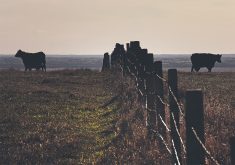With GIC interest rates between five and six percent, more farming corporations are locking away excess cash in GICs and other investments.
Before you do this, beware of the punitive tax rate. Corporate passive investment and rental income are taxable at 50.67 percent (with 30.67 percent refundable if dividends are paid out to the shareholders). At more than $50,000 in net passive income, the corporation loses the low tax rate small business deduction for the next tax year, with the small business deduction fully lost at $150,000 of net passive income.
Read Also

Farmer ownership cannot be seen as a guarantee for success
It’s a powerful movement when people band together to form co-ops and credit unions, but member ownership is no guarantee of success.
If a farming corporation has more than 10 percent of the fair market value of its assets in non-farm investments, it no longer qualifies as an active farming corporation for Canada Revenue Agency purposes. This can be catastrophic for a family farming corporation because the shares cannot be rolled tax deferred to the next generation.
For example, a corporation with more than $1 million in non-farm investments and $10 million in overall asset value would not qualify for the tax deferred intergenerational rollover and the value would be taxable on passing. At a roughly 25 percent tax rate, this would be a potential $2.5 million tax bill, which could cripple the farming operation.
The taxable transaction would be on the last to pass of a farming couple. Accidents happen and it’s always better to be onside with these rules rather than risking a massive tax bill.
Inactive assets include investments, GICs, excess cash not needed for ongoing operations and farmland that has been rented out for more years than it has been farmed. When farmland is rented out for more years than it has been farmed, it becomes an inactive “bad asset” in the corporation.
AgriInvest accounts are excluded from the 10 percent test, which is not on the historical book value of the assets but their current fair market value.
Non-farming assets, such as third-party trucking or oilfield service assets in a farm corporation, are bad assets for this test as well. For this reason, non-farm businesses should usually be in a separate corporation.
Government policy allows for beneficial tax-free rollovers to the next generation for true farming corporations, but they don’t want non-farm or investment companies qualifying for this.
Options for too many corporate investments:
- Buy farming assets — instead of putting excess cash in a GIC, buying farmland or equipment changes the asset from a bad asset to a good asset on the books. Buying farming assets with debt increases the asset base, and only assets are used for the test, not debt.
- Pay down debt — it may be tempting to earn interest on a GIC at more than five percent rather than paying down debt locked in at lower interest rates. However, passive GIC interest income is taxed at a higher tax rate in the corporation, and if you are close to the 10 percent inactive asset threshold, this might not be worth the risk.
- Increase your dividends — many farmers only use up their lowest tax bracket (less than $53,360 of taxable income). Why not use your next tax bracket up to $106,718 of taxable income and invest the after-tax income personally? Fifty thousand dollars a year for 10 years adds up to $500,000 taken out of a corporation. Some of this could earn income tax free in a tax-free savings account.
- Sell personal land to the corporation — use your tax free capital gains exemption, assuming you have farmed the land for at least two years. This allows you to extract excess cash from the corporation, while the corporation now has a good active farming asset.
- Setting up a holding company- — non-farm investments can be moved out of your farming corporation to a separate company. This company is taxable on passing, but at least the farming corporation shares can roll tax deferred to the next generation.
- Bill C-208 plans — allow the sale of shares of your corporation to a child’s corporation using your $1 million capital gains exemptions. Cash can then be extracted to repay yourself personally for the shares. To qualify, the corporation needs to have 90 percent of the assets as active assets at the time of the transaction. For corporations right around the 10 percent inactive asset threshold, we might do the transaction right before a corporation’s year-end, where you can pre-buy inputs for next year but before you cash all the deferred grain cheques.
Does this apply to your situation?
If you have no children or grandchildren to which you are planning to roll the shares of your farming corporation, the shares will be taxable on the last to pass of you and your spouse, regardless of how many investments are in the corporation. For younger farmers, with less equity built up in their corporation, this might not be a significant issue either. If most of your corporation is inactive assets, it may not be worthwhile to separate a few farming assets. However, given land prices, it might make sense to have your “active” corporate land in a separate company that can be rolled tax deferred to the next generation.
We recommend checking with your accountant to make sure that you plan properly for non-farm corporate assets.
Levi Derksen, CPA, CGA, is a senior manager in the Ag Team at Buckberger Baerg & Partners LLP in Saskatoon.















